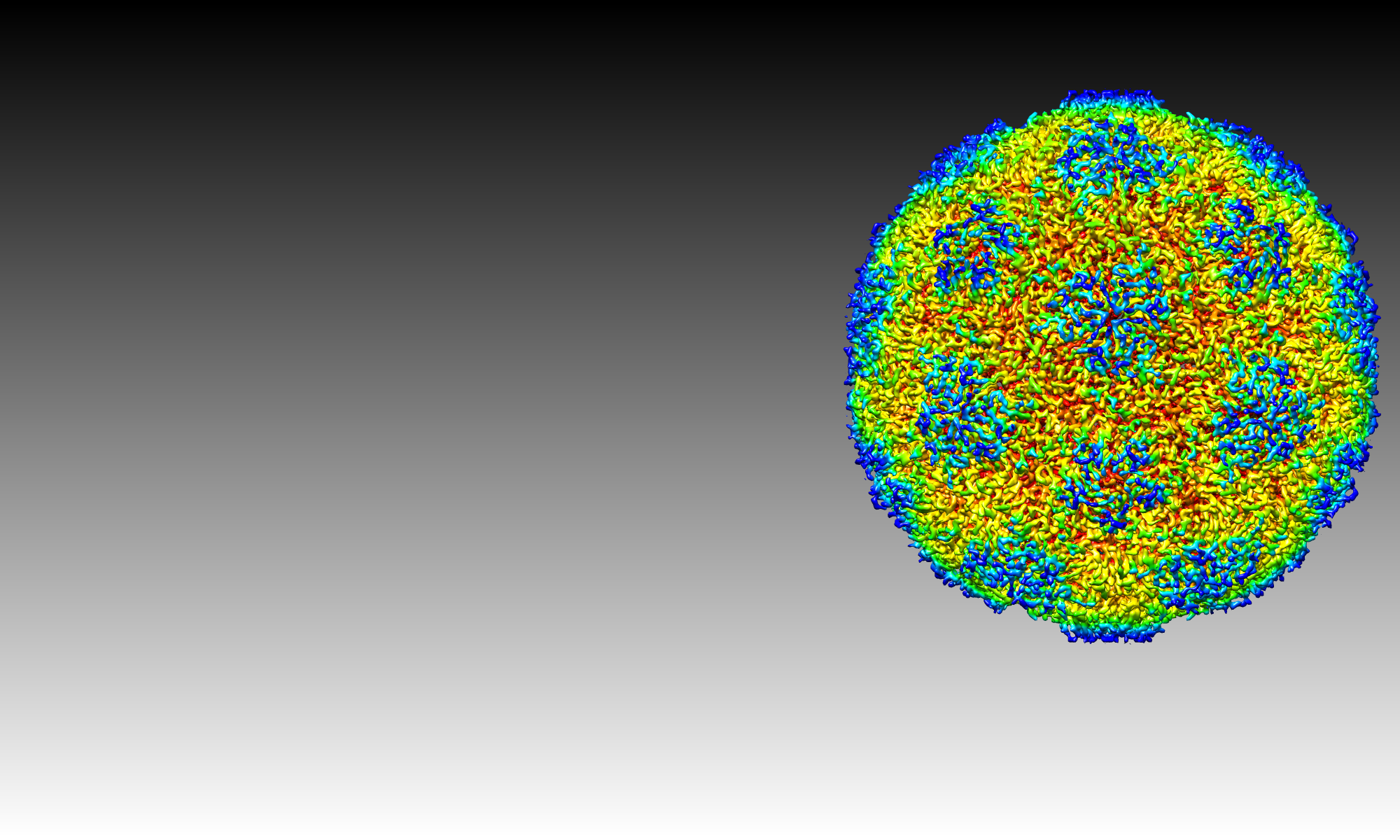Human parechovirus is just one of the many causes of childhood infections. By examining the structure of the virus in complex with a protein from human cells, we can understand more about the first stages of the infection. In order to start an infection, the virus has to get into a host cell. It does this by attaching to human proteins on the outside of the cell, in this case big molecules called integrins. The integrins then drag the virus into the cell where it can start to replicate. See the article for more details
Seitsonen, J., Susi, P., Heikkilä, O., Sinkovits, R.S., Laurinmäki, P., Hyypiä, T., Butcher, S.J. (2010). Interaction of αVβ3 and αVβ6 integrins with Human parechovirus 1. J. Virol 84:8509 – 8519
Structural insights into hantavirus
Hantaviruses are borne by rodents such as voles. They are spread in the droppings of the animal, and can infect humans who come into contact with the droppings, especially farm workers and gardeners. Some hantaviruses can cause severe haemorraghic fever which can lead to death. We studied a non-pathogenic hantavirus called Tula virus, as a useful model to understand hantavirus structure and assembly. We discovered the organisation of the major proteins that interact with the host during entry, and this could help to drive development of drugs to prevent, or relieve hantavirus infection. See the article:
Huiskonen, J.T., Hepojoki, J., Laurinmäki, P., Vaheri, A., Lankinen. H., Butcher, S.J., Grunewald, K. (2010) Electron cryo-tomography of tula hantavirus suggests a unique assembly paradigm for enveloped viruses. J. Virol. 84:4889 – 4897
